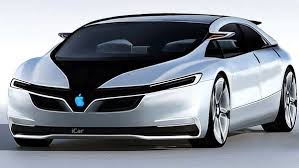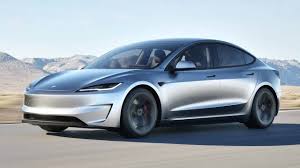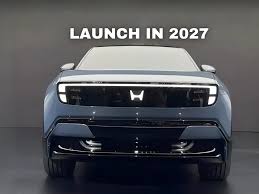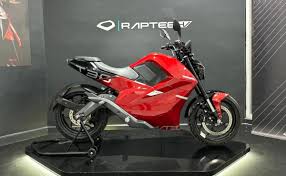Introduction
The Dacia Spring EV — internationally recognized as one of Europe’s most affordable electric cars and expected to arrive in India as the Renault Kwid EV — has just received a major upgrade for 2025. This refresh brings not just cosmetic tweaks but significant technical improvements aimed at making the small city EV more powerful, efficient, and appealing to a wider audience.
- Global Identity: Known as the Dacia Spring EV in Europe and expected to debut as the Renault Kwid EV in India, this compact electric hatchback bridges affordability and practicality for emerging EV buyers.
- Key Upgrades: The 2025 model introduces a more powerful electric motor (up to 65 hp), faster DC charging support, and improved acceleration, enhancing its everyday driving dynamics.
- Market Positioning: Despite the updates, it continues to be positioned as Europe’s most budget-friendly electric car, with Renault planning to replicate that low-cost EV strategy in India to make electric mobility more accessible to first-time buyers.
- Urban Focus: Designed for daily city commutes, the updated model maintains its lightweight body and compact dimensions, making it ideal for crowded urban roads.
- Strategic Importance: The refresh aligns with Renault Group’s global plan to expand affordable EV options across developing markets, starting with the Spring/Kwid lineup.
Design & Exterior Updates
The 2025 Dacia Spring EV embraces a refreshed, more contemporary design that gives it a sharper and more dynamic look while staying true to its compact crossover identity. The front fascia now features redesigned LED headlamps, a closed-off EV-style grille, and sportier front and rear bumpers that enhance its urban presence. The updates make the small electric hatchback look more mature and premium, aligning it visually with newer Renault models.
- Compact Yet Confident: The Spring EV continues to retain its compact crossover stance, offering the perfect balance between a hatchback’s agility and an SUV’s elevated posture — ideal for navigating tight city streets and occasional rough patches.
- Subtle Modern Touches: Refined body lines, a reprofiled bonnet, and sleeker lighting elements add to its modern aesthetic, giving it a more confident road presence without losing its simplicity.
- Premium Styling Additions: The inclusion of new dual-tone alloy wheel designs, revised DRLs, and fresh exterior color options like Arctic White, Urban Blue, and Solar Orange elevates its visual appeal. These updates collectively make the 2025 model look more stylish and contemporary, appealing to younger EV buyers.
Interior & Features
Inside, the 2025 Dacia Spring EV receives a noticeable upgrade in quality and comfort. The dashboard has been completely redesigned with improved materials, better ergonomics, and a more modern layout that enhances the cabin’s overall feel. The use of soft-touch inserts and textured finishes gives the interior a more refined appearance, while the layout ensures easy access to all essential controls for the driver.
- Advanced Infotainment: A new, larger touchscreen infotainment system takes center stage on the dashboard, offering wireless Android Auto and Apple CarPlay connectivity. The interface has been updated for smoother operation and clearer graphics, making navigation and entertainment more seamless.
- Driver-Focused Display: The addition of a fully digital instrument cluster provides key information such as battery status, range, and driving mode in a clear, customizable layout. Dacia has also integrated extra storage compartments across the cabin — including redesigned door pockets and center console spaces — for better practicality.
- Comfort Enhancements: Buyers now have the option for automatic climate control, which maintains a consistent cabin temperature, enhancing comfort during city commutes. The seats come with new, premium fabric upholstery featuring improved cushioning and subtle contrast stitching, elevating the overall in-cabin experience.
Performance & Powertrain
The updated Dacia Spring EV brings meaningful upgrades under the hood, focusing on more power, better acceleration, and smoother urban driving. While retaining its lightweight chassis and front-wheel-drive layout, the new powertrain options make the small EV more responsive and practical for city commutes and short trips.
- Base Motor Option: The entry-level variant continues with a 45 hp electric motor, providing sufficient power for daily urban driving and efficient energy consumption.
- Top Variant Boost: The new top-spec model now features a 65 hp motor — a significant increase from the previous 44 hp — delivering more spirited performance without compromising efficiency.
- Enhanced Torque Delivery: Torque has been optimized for quicker starts and smoother acceleration, making the EV feel livelier in stop-and-go city traffic.
- Improved Acceleration: The 0–50 km/h sprint has been improved by nearly 20%, giving the Spring EV a more confident and responsive driving experience in urban conditions.
- Chassis & Drive Layout: The vehicle retains its front-wheel-drive setup and lightweight frame, ensuring nimble handling, tight turning radius, and ease of parking in congested city streets.
| Feature / Model Dacia | a Spring EV (2025) | Renault Kwid EV (India, 2026 spec) | Tata Tiago EV | Tata Nexon EV | MG Comet EV |
|---|---|---|---|---|---|
| Motor Power | 45–65 hp | 45–65 hp | 40–44 hp | 129 hp | 70 hp |
| Torque | 125–140 Nm | 125–140 Nm | 105 Nm | 245 Nm | 140 Nm |
| Battery Capacity | 26.8 kWh | 26.8 kWh | 21 kWh | 40 kWh | 28 kWh |
| Range (Real-World) | 225–230 km | 225–230 km | 150–160 km | 300–315 km | 220–230 km |
| Top Speed | 105 km/h | 105 km/h | 105 km/h | 120 km/h | 110 km/h |
| 0–50 km/h Acceleration | Improved ~20% | Improved ~20% | Moderate | Quick | Moderate |
| DC Fast Charging | 30 kW | 30 kW | 25 kW | 50 kW | 35 kW |
| AC Charging | 7.4 kW Wallbox | 7.4 kW Wallbox | 7 kW | 7.2 kW | 7.2 kW |
| Approx. Price | €18,000 | < ₹10 lakh | ₹8–9 lakh | ₹15–17 lakh | ₹12–14 lakh |
| Launch Timeline | Q1 2025 | Mid-2026 | Available | Available | Available |
Battery & Range
The 2025 Dacia Spring EV retains its 26.8 kWh battery pack but comes with improved efficiency and smarter energy management, ensuring better real-world performance and reliability. These updates make the EV more practical for daily commuting and occasional longer trips.
- Battery Capacity: Continues with a 26.8 kWh lithium-ion battery, optimized for efficiency and longevity without increasing size or weight.
- Range Improvement: Offers a real-world range of around 225–230 km, slightly higher than the previous model, making it more suitable for city and suburban driving.
- Enhanced Energy Management: The updated battery management system ensures consistent performance in stop-and-go city traffic, optimizing power delivery and regenerative braking for a longer usable range.
Charging Improvements
The 2025 Dacia Spring EV receives a significant boost in charging capabilities, making it more practical for daily use and reducing downtime on the road. These improvements ensure that both urban commuters and occasional long-distance drivers can charge efficiently without compromising convenience.
- Faster DC Charging: The updated model now supports DC fast charging up to 30 kW, compared to the previous 22 kW, enabling quicker top-ups at public fast-charging stations.
- Reduced Charging Time: With the enhanced DC charging, the vehicle can go from 20–80% charge in approximately 40 minutes, down from nearly an hour previously, making mid-day or short stops more productive.
- Improved AC Home Charging: For overnight or home charging, the Spring EV now supports 7.4 kW AC wallbox units, offering faster and more efficient charging at residential setups while maintaining battery longevity.
Safety Upgrades
The 2025 Dacia Spring EV has been enhanced to meet stricter EU safety standards, ensuring better protection for both driver and passengers. Along with structural improvements, the vehicle now includes a suite of modern driver-assistance technologies to improve safety and reduce the risk of accidents.
- Automatic Emergency Braking (AEB): Detects potential collisions with vehicles or pedestrians ahead and applies brakes automatically to prevent or mitigate accidents.
- Lane Keep Assist: Helps the driver stay within lane markings by providing gentle steering corrections, reducing the likelihood of unintentional lane departure.
- Traffic Sign Recognition: Reads and displays speed limits and key traffic signs on the instrument cluster, helping drivers stay informed and compliant.
- Rear Parking Camera & Sensors: Assists in safe parking and reversing, providing visual and audible alerts for nearby obstacles.
- Strengthened Body Structure: The chassis and body panels have been reinforced for improved crash safety, ensuring compliance with current EU crash test standards while protecting occupants in collisions.
India Connection – Renault Kwid EV
The 2025 Dacia Spring EV serves as the foundation for India’s upcoming Renault Kwid EV, expected to launch in 2026. By leveraging the proven European model, Renault aims to bring an affordable, practical, and modern electric vehicle to the Indian market, targeting first-time EV buyers and urban commuters.
- Localized Production: Renault is expected to manufacture the Kwid EV locally in India, helping reduce costs, improve service availability, and make the EV more competitively priced.
- Range & Charging: The Indian-spec Kwid EV is likely to mirror the European model’s range of 225–230 km and offer similar DC fast charging capabilities, ensuring practical usability for city and short intercity drives.
- Urban-Focused Design: With its compact dimensions and upgraded features, the Kwid EV will be well-suited for Indian traffic conditions while maintaining affordability and efficiency.
Pricing & Availability
The updated Dacia Spring EV continues to emphasize affordability while offering meaningful upgrades, making it one of the most accessible electric cars in its segment both in Europe and potentially in India.
- European Price: Expected to start around €18,000, positioning it as a budget-friendly city EV with modern features and improved performance.
- Indian Price Projection: If localized, the Renault Kwid EV could be priced under Rs 10 lakh, making it one of India’s most affordable electric vehicles while retaining advanced features and decent range.
- Launch Timeline – Europe: The refreshed Dacia Spring EV is slated for release in Q1 2025, initially targeting urban commuters across major European markets.
- Launch Timeline – India: The Renault Kwid EV, based on this updated model, is expected to debut in mid-2026, coinciding with Renault’s push to expand EV adoption in the Indian market.
Conclusion
The 2025 Dacia Spring EV represents a significant evolution in the affordable EV segment, blending practicality, improved performance, and modern features. With its more powerful motor, faster charging capabilities, and upgraded interior, it moves beyond being just a budget-friendly option, emerging as a smarter and more enjoyable urban electric companion.
If Renault successfully launches the Kwid EV in India, leveraging these updates, it has the potential to redefine the country’s affordable EV market, offering first-time EV buyers a compelling mix of range, features, and convenience at a competitive price.
FAQs
Q1. What is the power output of the updated Dacia Spring EV?
A1. The 2025 model now offers up to 65 hp, a significant increase from the previous 44 hp, providing quicker acceleration and improved city driving performance.
Q2. How fast does the new Dacia Spring EV charge?
A2. It supports DC fast charging up to 30 kW, allowing the battery to reach 20–80% in around 40 minutes, significantly reducing downtime during trips.
Q3. What is the real-world range of the 2025 Dacia Spring EV?
A3. The EV delivers an estimated 225–230 km of range on a single charge under real-world driving conditions.
Q4. When will the updated Kwid EV launch in India?
A4. The Indian version, based on the updated Dacia Spring EV, is expected to launch by mid-2026.
Q5. What will be the expected price of the Kwid EV in India?
A5. Renault is likely to price the Kwid EV under ₹10 lakh, positioning it as one of India’s most affordable electric cars while offering modern features and practical range.





